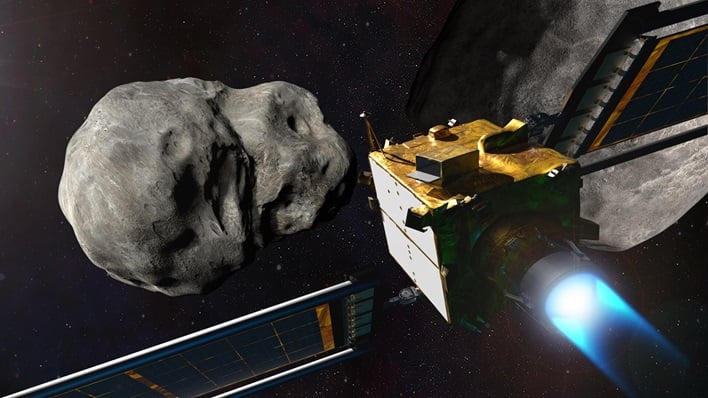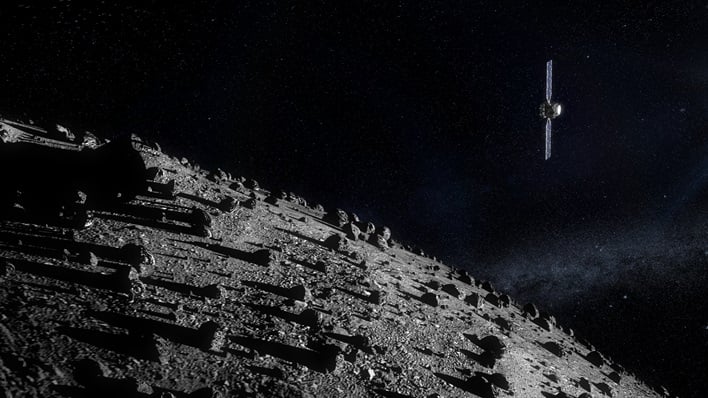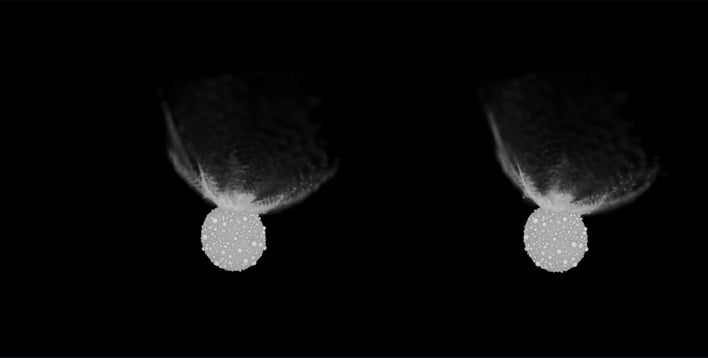NASA Slammed A Spacecraft Into An Asteroid So Hard That It Altered Its Shape

In September 2022, NASA’s DART spacecraft crashed into asteroid Dimorphos at an estimated speed of around 6.1km/s. The asteroid-altering event was part of NASA’s first-ever attempt to change an asteroid’s motion in space through kinetic impact. While the test proved to be a success by shortening the orbit of Dimorphos around its parent asteroid Didymos by approximately 33 minutes, researchers were still unsure how the impact affected the asteroid as a whole. However, a new study may provide them with impactful insight.
An international research team simulated DART’s impact by using the Bern Smoothed Particle Hydrodynamics (SPH) impact code. The software, developed at the University of Bern, replicates the collisional breakup of celestial rocky bodies, such as Dimorphos.
According to the European Space Agency, Bern SPH works by “converting colliding bodies into millions of particles whose behavior upon impact is determined by the interplay of various reconfigurable variables, such as the asteroid’s gravity, density or material strength.”
ESA added that the software has been validated by laboratory experiments and been able to reproduce one existing asteroid impact test, when Japan’s Hayabusa2 spacecraft crashed a small copper impactor into asteroid Ryugu in 2019.
Sabina Raducan of the Space Research and Planetary Science, Physics Institute of the University of Bern, explained, “The code runs on a High Performance Computing Cluster here at the University.” Raducan added, “This is a computationally intensive process, with each simulation taking around a week and a half to run, and we ran around 250 simulations overall, reproducing the first two hours after impact.”
The simulations included all the known values, such as the mass of the DART spacecraft, approximate shape of the asteroid, and orbital deflection and size of the impact plume, while varying the factors they didn’t know, such as the closeness of packing of boulders, their density, and the porosity of material and its overall cohesion. The researchers also made what they referred to as “reasonable assumptions” based on the physical properties of meteorites resembling Dimorphos.

Raducan remarked the team checked which of the simulation run outcomes “most closely matched observed reality.” From that analysis, they determined Dimorphos to be a relatively weak ‘rubble pile’ asteroid that is held together by the asteroid’s extremely weak gravity, rather than cohesive strength. This led the team to believe that when ESA’s Hera mission, which will perform a detailed post-impact survey of Dimorphos, reaches the asteroid, it will find that the asteroid has been completely reshaped, and not find an impact crater left by DART.
The team understands the importance of clarifying its simulation results with the upcoming Hera mission. Raducan explained, “We still need to understand and clarify this behavior, because we cannot make statistics on only a trio of asteroids, but a general lack of cohesion for all small asteroids is an intriguing suggestion, and would be good news for planetary defense, because if we know in advance how a body will react, this will make it easier to design the appropriate deflection tools.”


